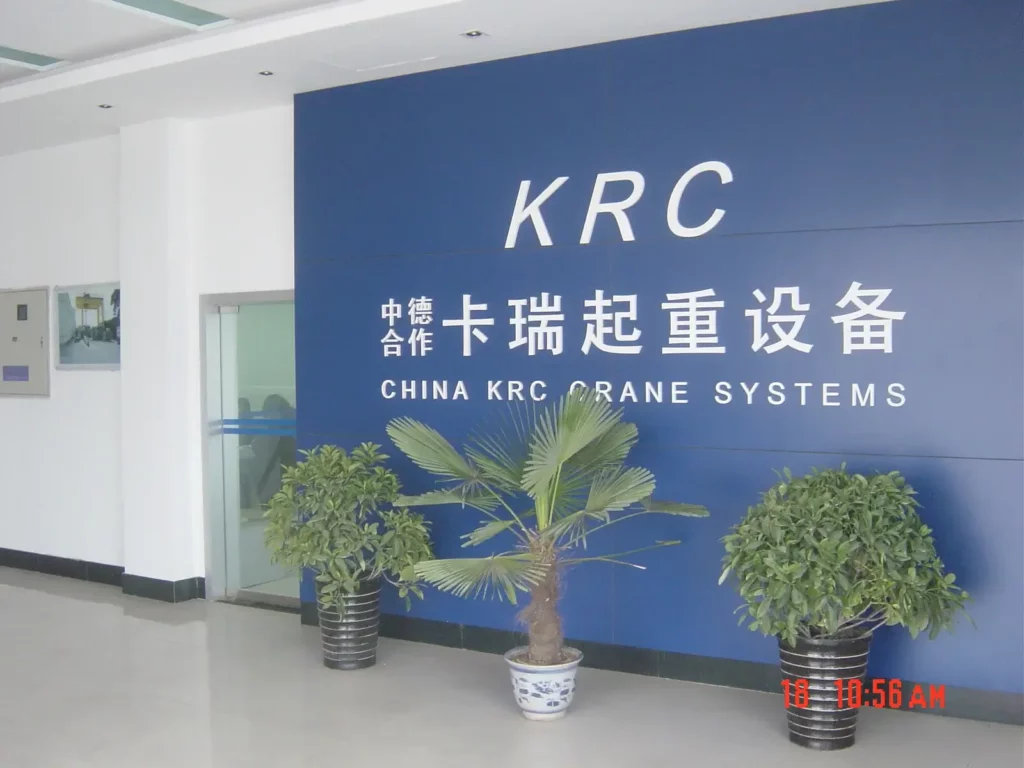In the world of industrial operations, cranes are indispensable tools that enhance efficiency and safety in material handling. With various types of cranes designed for specific tasks, understanding their unique functionalities is essential for optimizing workflow and productivity. This guide delves into the diverse types of industrial cranes, providing insights into their applications, advantages, and best practices for use.
Readers can expect to explore the fundamental differences between overhead cranes, mobile cranes, and specialty cranes, among others. Each section will highlight the unique features and benefits of these machines, enabling you to make informed decisions for your operations. Additionally, we will discuss safety considerations and maintenance tips to ensure longevity and reliability in your crane systems.
Whether you are a seasoned professional or new to the industry, this comprehensive guide will equip you with the knowledge needed to navigate the complexities of industrial cranes. By the end, you will have a clearer understanding of which crane types best suit your specific operational needs, ultimately enhancing your facility’s performance.
Understanding Different Types of Industrial Cranes: A Comprehensive Guide
Cranes are vital tools in various industries, serving as essential equipment for lifting and moving heavy loads. Whether in construction, manufacturing, shipping, or any other sector that requires the transport of substantial materials, understanding the different types of cranes and their applications is crucial for ensuring safety and efficiency. This comprehensive guide will explore various types of industrial cranes, their features, advantages, and typical use cases.
Types of Industrial Cranes
Industrial cranes come in many designs to meet specific lifting needs. Below is a detailed overview of the most common types of cranes used across various industries.
Technical Features Comparison
| Crane Type | Structure | Mobility | Load Capacity | Typical Use Cases |
|---|---|---|---|---|
| Overhead Crane | Two parallel beams supported by columns | Limited to tracks | Up to several tons | Manufacturing, warehousing |
| Gantry Crane | Bridge supported by legs | Mobile or fixed | Varies, often heavy | Shipping yards, construction sites |
| Jib Crane | Vertical post with a horizontal arm | Stationary or mounted | Limited range | Workshops, assembly lines |
| Tower Crane | Tall structure with a rotating arm | Fixed | High capacity, several tons | Large construction projects |
| Mobile Crane | Mounted on trucks or crawlers | Highly mobile | Varies, flexible | Construction, event setups |
| Rough Terrain Crane | Sturdy tires for uneven surfaces | Mobile | High capacity | Outdoor construction, oil and gas operations |
| Crawler Crane | Tracks for stability | Mobile | Heavy loads | Large construction, mining operations |
| Aerial Work Platform | Elevated platform for personnel | Mobile | Up to 2 tons | Maintenance work, installation tasks |
Crane Types Overview
| Crane Type | Description | Advantages | Disadvantages |
|---|---|---|---|
| Overhead Crane | A crane that lifts loads along two parallel beams. | Maximizes floor space; suitable for heavy loads. | Requires structural support; limited mobility. |
| Gantry Crane | A crane with a hoist that travels along a bridge supported by legs. | Portable; can be customized for various applications. | May require significant floor space; less stable than overhead cranes. |
| Jib Crane | A crane with a horizontal arm extending from a vertical post. | Compact and easy to operate; ideal for smaller spaces. | Limited reach; may not support heavy loads. |
| Tower Crane | A tall crane with a vertical tower and a horizontal arm. | Excellent for high-rise construction; can lift heavy materials. | Requires significant space; fixed location. |
| Mobile Crane | A crane mounted on a truck or crawler for easy transport. | Highly versatile; can be used in various terrains. | Limited lifting height compared to fixed cranes. |
| Rough Terrain Crane | A mobile crane designed for off-road use. | Excellent stability on uneven ground; high lifting capacity. | Limited speed; may not be suitable for all terrains. |
| Crawler Crane | A crane on tracks providing stability on soft ground. | Ideal for heavy-duty lifting; can navigate difficult terrains. | Limited mobility compared to wheeled cranes. |
| Aerial Work Platform | A platform that elevates personnel for work at height. | Safe access to high areas; versatile for various tasks. | Limited load capacity; not suitable for heavy lifting. |
In-Depth Insights on Each Type
1. Overhead Cranes
Overhead cranes are widely used in manufacturing and warehousing. They consist of a hoist that runs along two parallel beams, allowing for horizontal and vertical movement. This design optimizes floor space, making them ideal for facilities where heavy loads need to be lifted frequently. However, they require significant structural support to handle the loads.
2. Gantry Cranes
Gantry cranes are versatile and can be used in both indoor and outdoor settings. They consist of a bridge that spans an area and is supported by legs. Their mobility allows them to be easily moved, making them suitable for shipping yards and construction sites. Gantry cranes are often more cost-effective than permanent overhead solutions.
3. Jib Cranes
Jib cranes are perfect for smaller industrial settings. They consist of a vertical post with a horizontal arm that allows for rotation and movement of loads within a limited radius. Jib cranes are often used in workshops and assembly lines, providing quick access to materials without taking up too much space.
4. Tower Cranes
Tower cranes are essential for large construction projects, particularly in building skyscrapers. They have a tall vertical structure and a horizontal arm that can lift heavy materials to great heights. Their rotating capability allows for versatile movement across the construction site. However, they are fixed in one location and require significant setup.
5. Mobile Cranes
Mobile cranes are designed for flexibility and quick relocation. Mounted on trucks or crawlers, they can easily move from one job site to another. Their adaptability makes them ideal for construction projects that require frequent layout changes. However, they may not lift as high as fixed cranes.
6. Rough Terrain Cranes
Rough terrain cranes are built to navigate uneven surfaces, making them ideal for outdoor construction sites. Equipped with large tires and outriggers, they offer stability while lifting heavy loads. These cranes are frequently used in the oil and gas industry, where job sites can be remote and rugged.
7. Crawler Cranes
Crawler cranes use tracks instead of wheels, providing excellent stability and load-bearing capacity. They are ideal for heavy-duty lifting in challenging environments, such as large construction projects or mining operations. However, their mobility is limited compared to wheeled cranes.
8. Aerial Work Platforms
Though not traditional cranes, aerial work platforms are essential for lifting personnel to heights for various tasks. They are designed for mobility and ease of use, making them suitable for maintenance work and installations. However, their lifting capacity is typically limited.
Conclusion
Understanding the different types of industrial cranes is crucial for optimizing operations and ensuring safety in various industries. Each crane type offers unique advantages and is suited for specific applications. Whether it’s an overhead crane in a manufacturing facility or a tower crane on a construction site, selecting the right equipment can significantly improve workflow and productivity.
FAQs
1. What is the main difference between overhead cranes and gantry cranes?
Overhead cranes are supported by a fixed structure and optimize floor space, while gantry cranes have legs and can be mobile, making them versatile for various applications.
2. What factors should I consider when choosing a crane?
Consider load capacity, working environment, lift height, mobility requirements, and safety features to select the most suitable crane for your needs.
3. Are mobile cranes suitable for heavy lifting?
Yes, mobile cranes can handle substantial loads, but their lifting height may be limited compared to fixed cranes like tower or overhead cranes.
4. Can jib cranes be used in small workshops?
Absolutely! Jib cranes are ideal for small spaces and are often used in workshops for tasks that require lifting and moving materials efficiently.
5. What industries commonly use aerial work platforms?
Aerial work platforms are frequently used in maintenance work, construction, and installation tasks where safe access to high areas is required.

